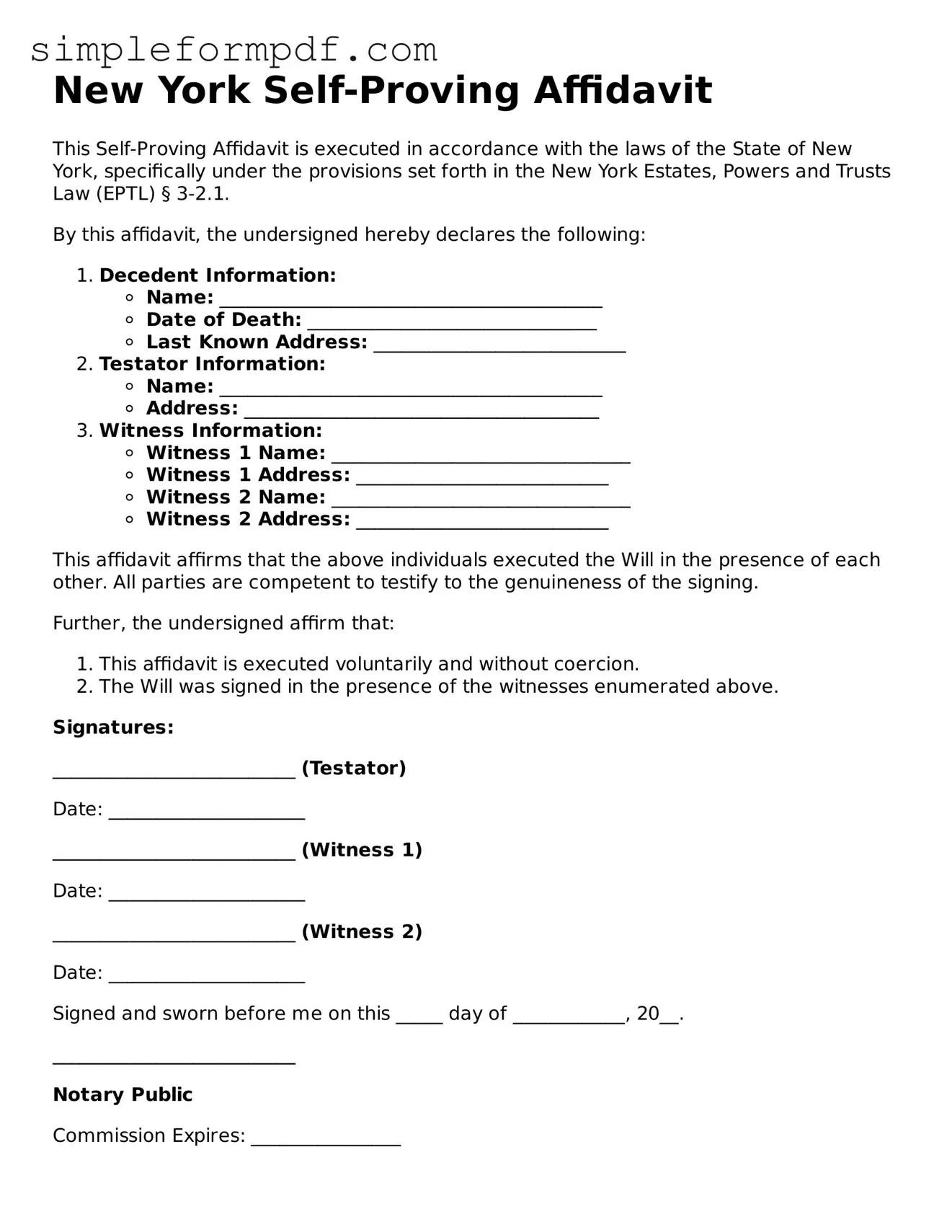New York Self-Proving Affidavit
This Self-Proving Affidavit is executed in accordance with the laws of the State of New York, specifically under the provisions set forth in the New York Estates, Powers and Trusts Law (EPTL) § 3-2.1.
By this affidavit, the undersigned hereby declares the following:
- Decedent Information:
- Name: _________________________________________
- Date of Death: _______________________________
- Last Known Address: ___________________________
- Testator Information:
- Name: _________________________________________
- Address: ______________________________________
- Witness Information:
- Witness 1 Name: ________________________________
- Witness 1 Address: ___________________________
- Witness 2 Name: ________________________________
- Witness 2 Address: ___________________________
This affidavit affirms that the above individuals executed the Will in the presence of each other. All parties are competent to testify to the genuineness of the signing.
Further, the undersigned affirm that:
- This affidavit is executed voluntarily and without coercion.
- The Will was signed in the presence of the witnesses enumerated above.
Signatures:
__________________________ (Testator)
Date: _____________________
__________________________ (Witness 1)
Date: _____________________
__________________________ (Witness 2)
Date: _____________________
Signed and sworn before me on this _____ day of ____________, 20__.
__________________________
Notary Public
Commission Expires: ________________
